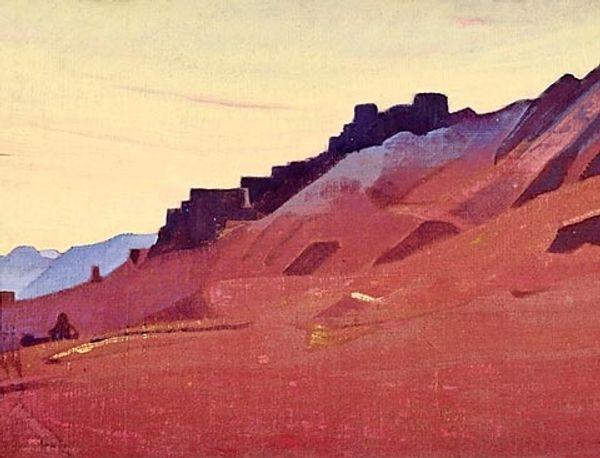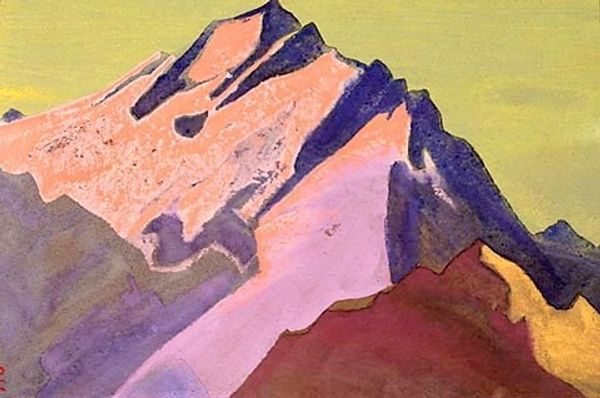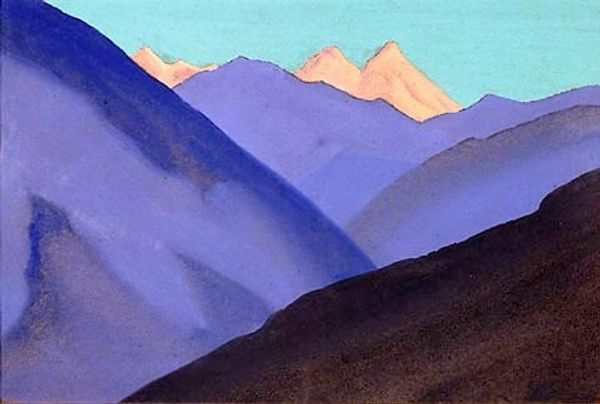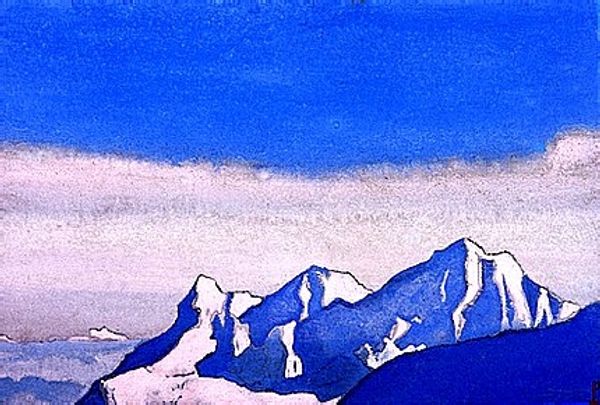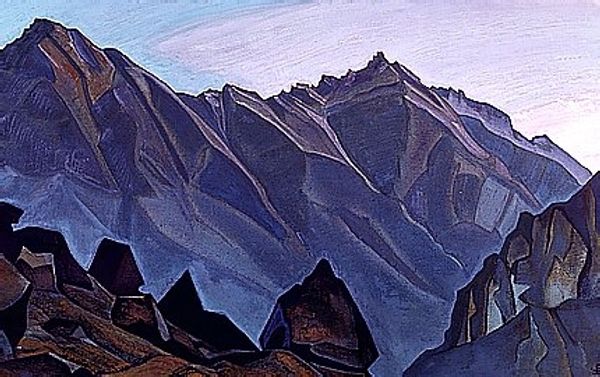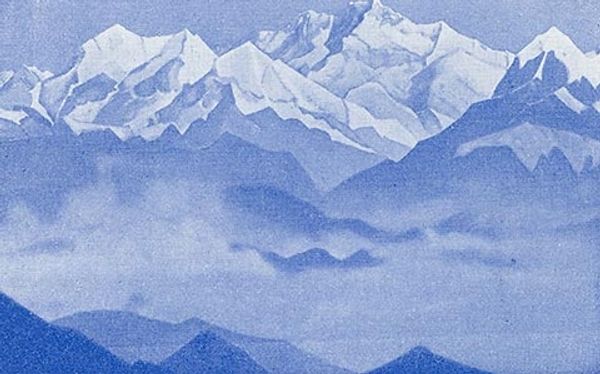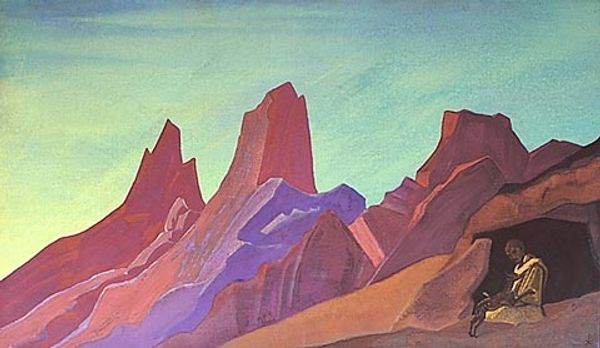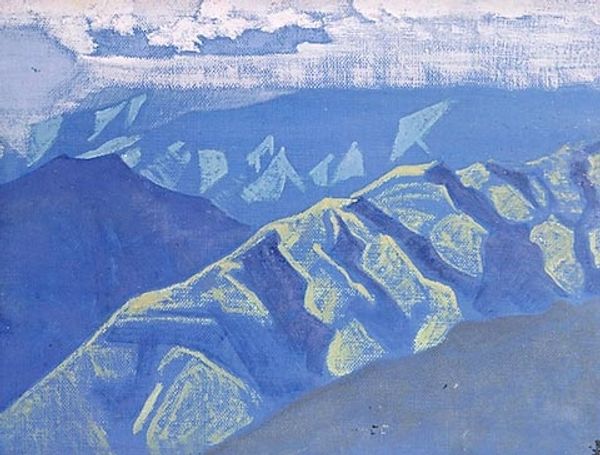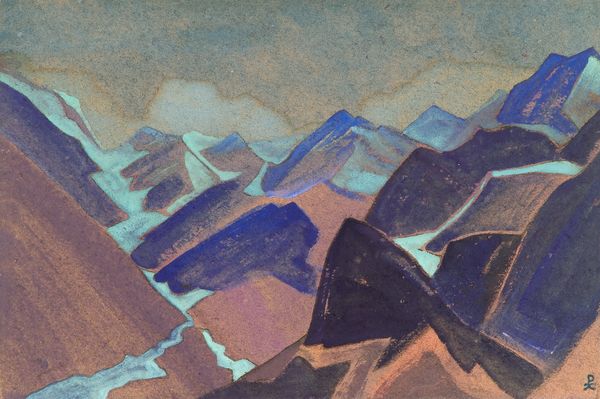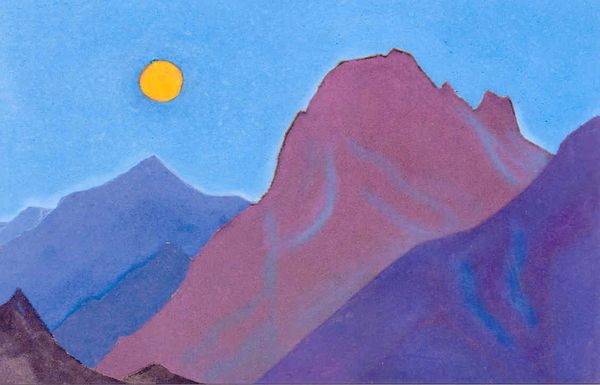
Dimensions: 29.5 x 44.5 cm
Copyright: Public domain
Curator: It gives the impression of sublime stillness. The interplay of blues and oranges creates an almost otherworldly atmosphere, doesn't it? Editor: It does indeed. We’re looking at Nicholas Roerich's "Himalayas," painted in 1947. Roerich's work is fascinating when considered alongside his interests in theosophy and his spiritual explorations of the East. Curator: The composition directs your eye upward, towards the mountains, but also hints at the structures below... Do those structures symbolize human aspiration toward something greater? Given Roerich's engagement with theosophy, this becomes relevant. Editor: Semiotically speaking, the sharp peaks contrast against the soft hues, thus signifying perhaps the harsh realities alongside spiritual aspirations. Look at how the tempera medium creates such texture—it allows a beautiful luminosity. Curator: Absolutely. I see in his romanticism the Soviet Nonconformist aesthetic rising as a counter-narrative in art history; he presents an alternative to social realism with a lens of cultural identity outside Western constructs. The mountains could reflect concepts of permanence amidst the constant shift of power and political turmoil that marked that period. Editor: Indeed, it seems less an objective representation and more a distillation of form, presented almost as ideograms rather than naturalistic shapes. Considering his Orientalist stance, there's a tension, a negotiation between observation and interpretation. Curator: He certainly positions these landscapes as potent symbols rather than mere representations of geography. It becomes less about seeing mountains as physical structures and more about deciphering a constructed identity and political ideologies. Editor: I suppose we are each drawn to the facets that reflect our interpretations. His use of light and shadow adds a dimensionality that transcends the constraints of a two-dimensional plane, for me, this artwork is successful by evoking the power that visual form carries. Curator: Ultimately, it challenges our assumptions about the power of land and aesthetics within broader social and spiritual movements. Editor: It offers viewers space for introspection and allows one to appreciate the interplay between the real and the ethereal, solidifying itself as more than just scenery.
Comments
No comments
Be the first to comment and join the conversation on the ultimate creative platform.

